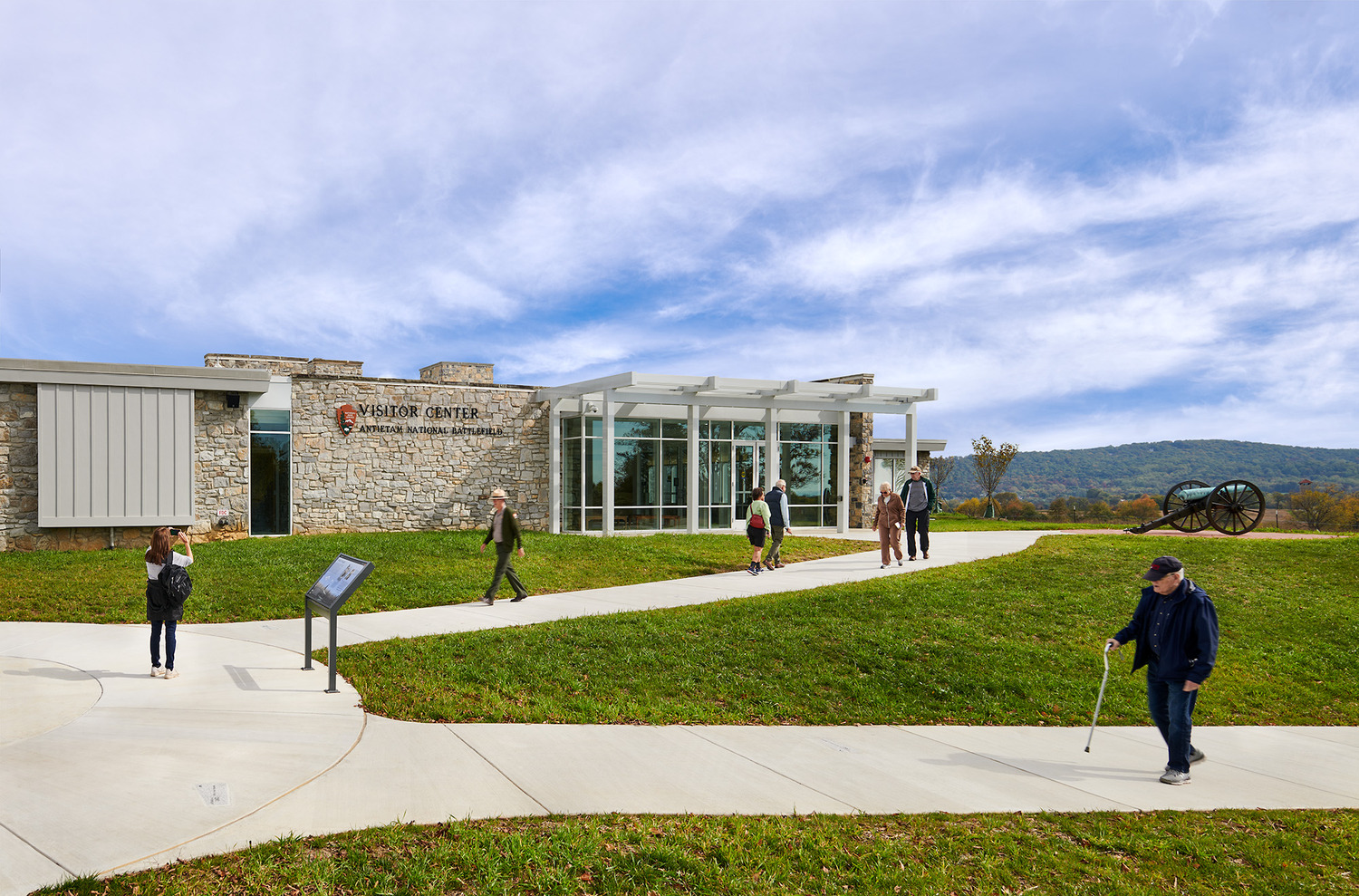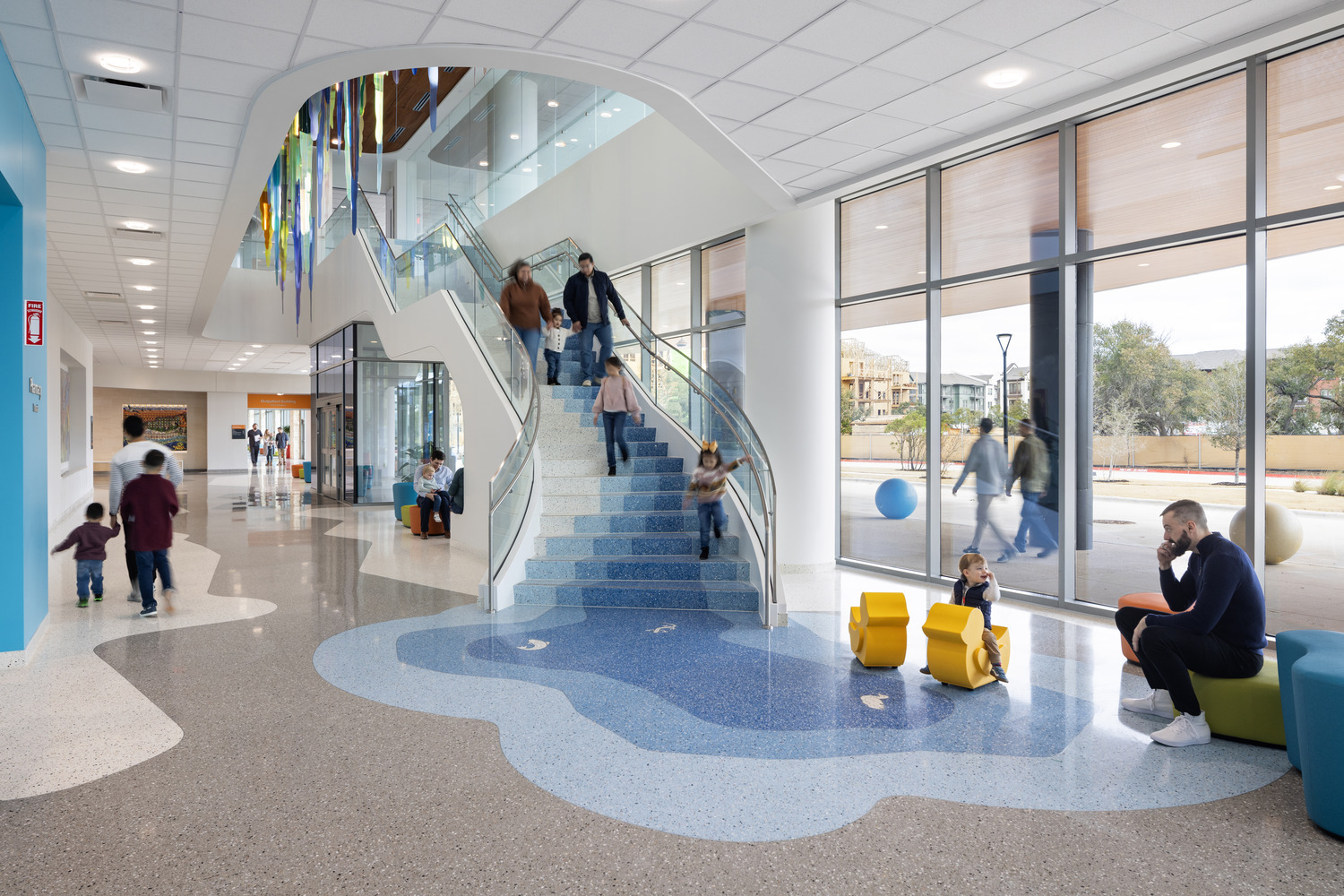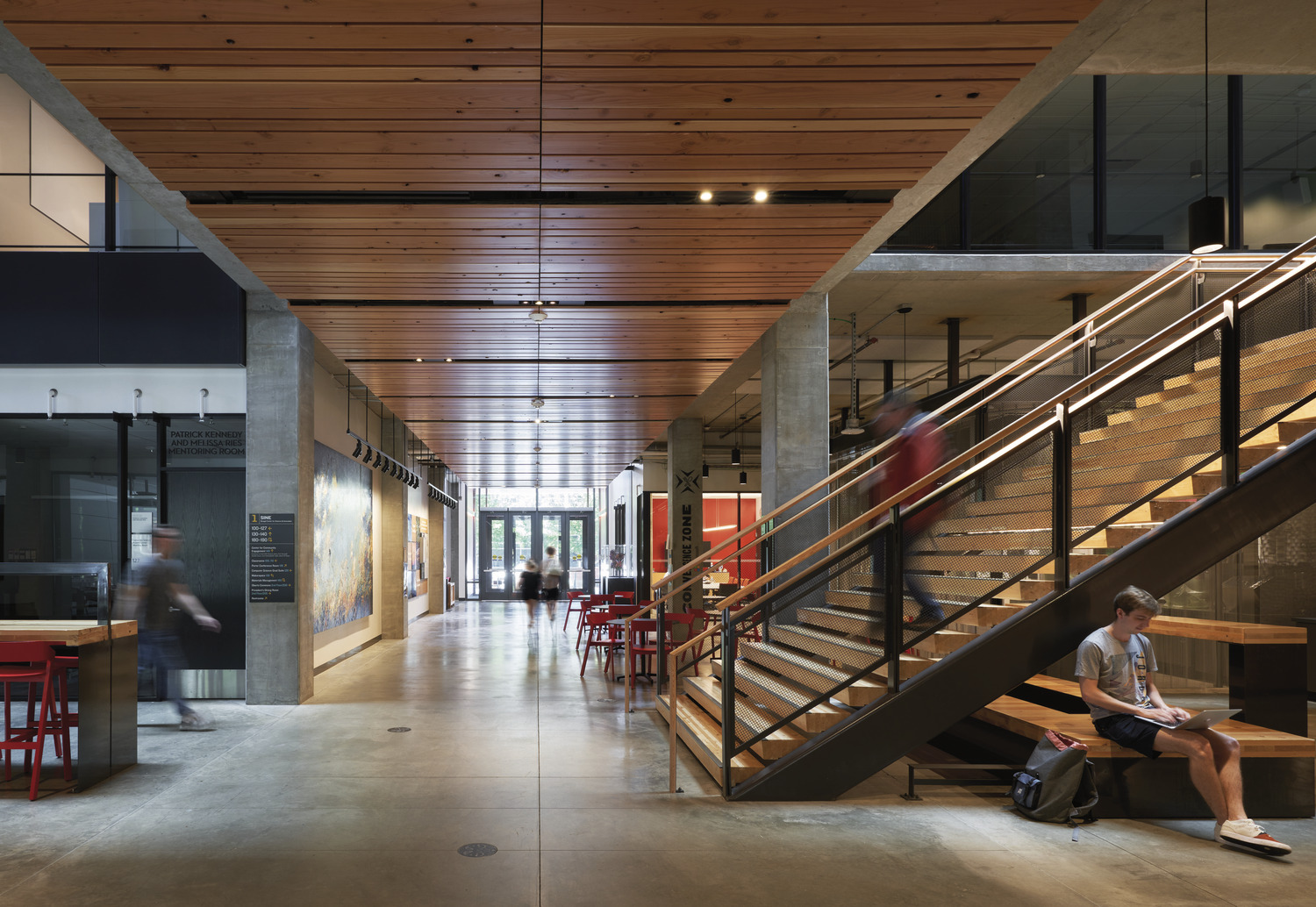At Page, we’ve always believed that design has the power to transform the world around us. With more than 125 years of history, our commitment to sustainability, social responsibility, and innovation is stronger than ever. The 2024 Design for Impact report showcases our progress and highlights the road ahead as we continue to shape the future of the built environment—one step at a time.
Reducing Environmental Impact: A Carbon-Neutral Future
Buildings account for 39% of global carbon emissions, making it crucial to reduce both operational and embodied carbon. Our commitment to the AIA 2030 Challenge has been steadfast, with a goal to make all our projects carbon-neutral by 2030. In 2023, Page achieved a 59.4% reduction in Energy Use Intensity, outpacing the industry average and setting a clear course for future milestones. We’re also increasing the percentage of projects utilizing energy modeling, aiming for 90% of all eligible projects by 2025.
This year, we’ve doubled down on our efforts to tackle embodied carbon by creating an embodied carbon toolkit for our teams, setting Global Warming Potential constraints for high-impact materials, and continuing to conduct Life Cycle Assessment analyses on our projects.
One standout project is the Antietam National Battlefield Visitor Center, where we integrated photovoltaic arrays and energy-efficient HVAC systems, transforming the historic site into a net-zero energy facility. This is just one example of how we’re leading with regenerative thinking and sustainable solutions to minimize our environmental footprint.

Improving Our Communities: Accessibility and Well-being
As designers, our impact goes beyond the physical environment. We have a responsibility to foster healthy, accessible spaces that benefit everyone. In 2024, we continued our commitment to selecting healthy, sustainable materials, prioritizing low-emission and ethically sourced options. Our coLAB initiatives, like the Materials and Well-being coLABs, have been instrumental in educating our teams and advancing these principles firmwide.
Equity, diversity, and inclusion remain at the heart of our social responsibility strategy. With 46% of our new hires coming from underrepresented racial and ethnic groups, we’re proud to lead the industry in diversity. But representation is just the beginning—our workforce must also feel supported and empowered. From pro-bono design services to community engagement programs, Page continues to invest in initiatives that elevate marginalized voices and create opportunities for all.
The Texas Children’s Hospital North Austin Campus is a shining example of our human-centered approach. This 365,000-square-foot hospital, designed to meet the diverse needs of the Austin community, blends leading-edge healthcare with sustainability, incorporating natural materials and outdoor spaces that promote healing while ensuring ecological stewardship.

Leading with Integrated Design: Innovation at Every Step
Innovation isn’t just something we do at Page—it’s embedded into our culture. Our interdisciplinary teams bring together architects, engineers, building scientists, and designers to push the boundaries of what’s possible. This year, we’ve expanded our Design Exchange, a firmwide resource that connects traditional design craftsmanship with leading-edge technology like VR, AI, and computation.
Our partnership with Seattle University’s Jim and Janet Sinegal Center for Science and Innovation is a testament to integrated design. This state-of-the-art facility seamlessly connects 21st-century labs with high-tech collaboration spaces, fostering connections between students, faculty, and industry leaders. Designed to inspire discovery, the building reflects our commitment to innovation and sustainability.

Looking Ahead
As we continue to evolve, we are driven by the belief that every step counts. The 2024 Design for Impact report is more than a reflection of our past achievements; it’s a roadmap for the work still to come. From reducing carbon emissions to fostering inclusive communities, Page is committed to creating designs that are not only sustainable but transformational.
We’re just getting started. Join us as we continue to Think What’s Possible—one project, one partnership, and one community at a time.